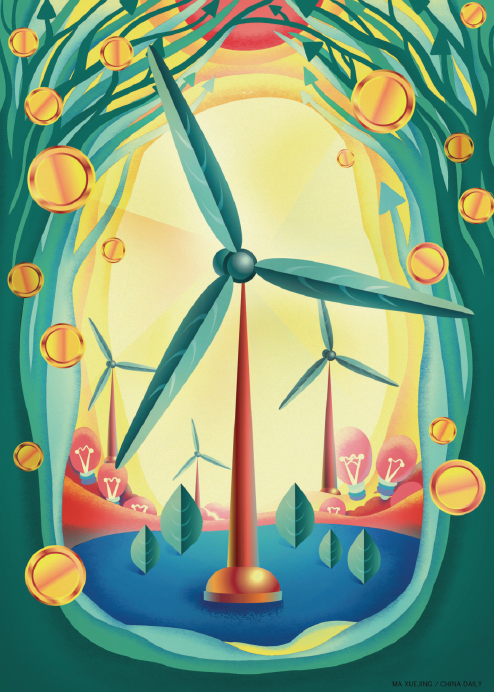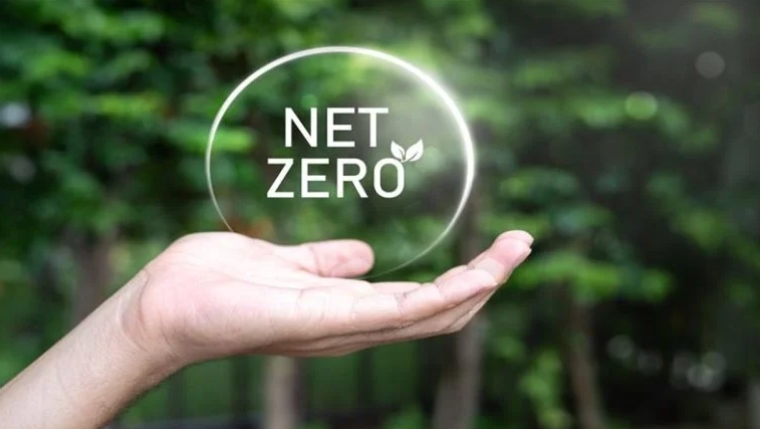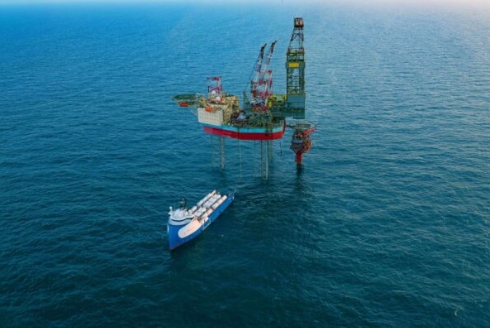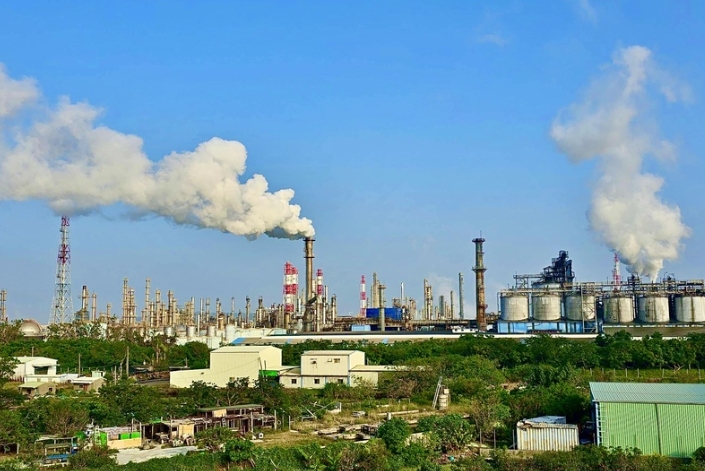![An overview of an offshore wind farm in Zhoushan, Zhejiang province. [Photo by Yao Feng/For China Daily]](https://www.world-energy.org/uploadfile/2019/0715/20190715020529778.jpeg) An overview of an offshore wind farm in Zhoushan, Zhejiang province. [Photo by Yao Feng/For China Daily]
An overview of an offshore wind farm in Zhoushan, Zhejiang province. [Photo by Yao Feng/For China Daily] Clean energy, environmentally friendly technology, green infrastructure, planet-preserving finance... sustainable economic development on a global scale is achievable with sustained efforts, sharp focus, visionary policy and imaginative project implementation-that's the takeaway for umpteen businesses participating in, and benefiting from, China-led Belt and Road Initiative, experts said.
The BRI is getting greener, they said. China spearheads the BRI to create transcontinental infrastructural and trade networks across land and sea routes, so as to deliver development and prosperity to billions of people around the world.
More businesses are sewing up plans to invest trillions of dollars to promote environmentally friendly infrastructure and technology projects in over 130 economies participating in the BRI.
And given the BRI's global scale, the go-green thrust on development will have far-reaching impact on the participating economies in the coming decades, they said.
"With the deepening of the BRI, green development should be taken as a top priority, in addition to other key factors like gross domestic product and employment," said Ma Jun, chairman of the Green Finance Committee of the China Society for Finance and Banking.
Ma made the remarks at a panel discussion during the World Economic Forum's Annual Meeting of the New Champions 2019. Known as Summer Davos, the event was held in Dalian, Liaoning province, earlier this month.
"The majority of investments worldwide in the coming decades will be in the BRI economies. So, the initiative is expected to drive a huge amount of capital globally," said Ma.
The timing of his remarks coincides with China's newfound focus on environmentally friendly development via the BRI, to be in line with the UN 2030 Agenda for Sustainable Development.
China's stance is expected to inject fresh impetus into efforts for economic development in BRI economies. Green BRI is also part of China's broader efforts to promote high-quality development. High-quality infrastructure construction will greatly improve environment and lead to high-quality economic growth, experts said.
President Xi Jinping shared his vision for green development at the first Belt and Road Forum for International Cooperation in May 2017.He urged participating economies to embrace "the new vision of green development and a way of life and work that is green, low-carbon, circular and sustainable".
Xi reiterated his vision at the second BRF in April this year. Joint development of the initiative is also aimed at building an open and green development road, he said.
China and other BRI economies reached a broad consensus at the forum on high-quality, green development. The country aims to bring greater development opportunities to other countries around the world through the BRI.
Jeffrey Wong, head of advisory at market consultancy KPMG China, said at Summer Davos: "During this process (of BRI-related development), Chinese companies are actively engaged in a lot of environment-related projects, such as renewable energy like wind and solar, clean energy including LNG and LPG as well as environment utilities."
These projects have helped reduce consumption of energy and boosted the development of local economies, he said.
For instance, Chint Group, a Chinese industrial electrical equipment and new-energy enterprise, is helping construct several hundred photovoltaic power stations in economies relating to the BRI.
Photovoltaic, generated by solar cells, is a clean and renewable energy. It has long been considered the key to a country's efforts to transform its energy mix and boost safety.
Nan Cunhui, chairman and founder of Chint, said: "While helping build photovoltaic infrastructure, we also brought our most advanced clean technologies and concepts to BRI economies, especially the underdeveloped ones, and that turned out to be an important accelerator of local economic and social development."
The Leqing, Zhejiang province-based firm has also offered its high-and low-voltage products and services to 80 percent of the BRI markets including Pakistan, Thailand, Egypt and Russia, Nan said.

According to a report by the Global Development Policy Center's Global China Initiative at Boston University, China's investments in power generation have been "more green than black" over the past few years.
Over 50 percent of the country's investments in power generation projects around the world are related to clean energy that has water, wind or the sun as the main source, the report said.
The total investment in energy projects in BRI-related countries and regions has reached $186.3 billion. Of this, the clean energy sector accounts for 26 percent.
In Chile, South America, the first batch of 100 Chinese-made electric buses of BYD, which offer quiet, smooth, quick and green rides, are being inducted into the local public transport fleet.
Chilean President Sebastian Pinera said the nation hopes to cooperate with Chinese companies like BYD in clean energy. Chile boasts solar, wind and tidal energy resources and is in need of such projects that can exploit them, he said.
KPMG's Wong allayed fears that the BRI may gradually morph into a vehicle that transports pollution from China to other countries. "China's green BRI proves that the concept of production capacity cooperation does not really mean shifting industry that may be highly polluting and a big consumer of energy, from China to BRI countries.
"Instead, China is sharing advanced technologies and industry expertise to benefit BRI countries, helping them develop the local industry, and enabling sustainable growth."
Besides technologies and expertise, effective financing is crucial for green development. The Asian Development Bank estimated that Asia would need $1.7 trillion of infrastructure investment annually between 2016 and 2030.
So, China has led the path of green finance by encouraging flow of capital into more sustainable projects. It helped found the Silk Road Fund in December 2014 to offer investment and financing support for trade and economic activities within the framework of the BRI.
The Chinese government contributed $40 billion to the fund and added 100 billion yuan ($14.5 billion) in 2017. By the end of last year, the fund had pledged to back 28 projects entailing investments of over $11 billion.
At the WEF's Dalian event, Sun Chanthol, Cambodia's minister of public works and transport, acknowledged the significance of this move. "It was not easy for most developing countries to get financing for road and railway construction, yet China-led BRI, including the Silk Road Fund, has offered a (helping) hand."
Such help enabled Cambodia to build its first high-speed railway, which is expected to reduce air pollution and congestion as well as promote economic prosperity, he said.
Another shining example of development-oriented finance is green bonds. When the World Bank issued the first-ever green bond over 10 years ago, it was a novelty that raised tens of millions of dollars. But by mid-2018, the world had $1.45 trillion of climate-aligned bonds outstanding.
"China has been leading the region's shift toward financing with green bonds … and has been at the forefront of using green bonds to finance sustainable development," said Rajiv Biswas, Asia-Pacific chief economist at IHS Markit, in an article published in China Daily.
In 2016, China officially launched its green bond market and issued labeled green bonds worth 205.2 billion yuan.
China was also the first country to make it compulsory for all listed firms and bond issuers to disclose the environmental, social and governance risks associated with their operations by 2020.
Several large Chinese banks, including Industrial and Commercial Bank of China Ltd, Bank of China Ltd and China Development Bank Corp, have issued climate bonds.
This April, ICBC also issued its first green bond focusing on Belt and Road interbank cooperation. Offered in three currencies, the bond aims to support the development of green projects under the BRI and boost interbank cooperation in the region.
Media reported that China is by far the largest issuer of green bonds among the world's emerging markets. Internationally aligned green bond issuance from China reached $31.2 billion in 2018, accounting for 18 percent of global issuance, said a report published by the Climate Bonds Initiative and China Central Depository& Clearing Co Ltd.







